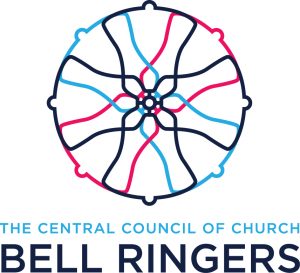(Covering the Touring Tower, the National Call Change Competition, inclusiveness on BellBoard, D-Day, Scouts, Schools, Inveraray and speed networking)
I had a novel experience of a speed networking event at a conference this week. This was where we sat across from another civil servant and talked about whatever for 8 minutes and then leapt up to the next table. Apart from meeting someone who could actually help me with a specific problem, I got to chatting with another about my weekend plans, which included a trip to Inveraray. Turns out it was one of his favourite places as well. This led to a nice discussion about the scenery and the George, and we were heading inevitably towards my describing my relationship with the bell tower.
A few years ago I might have just dodged this conversation, because of the massive amount of explaining that would be needed (more than 8 minutes’ worth). But there we went and there was a brief exchange about the bell tower opening and whether the view was worth it and a mention of a friend who had done some bellringing as a kid. We might have been talking about anything.
That is the type of conversation we want to have with everyone – bellringing is just this thing that happens to be normal and special all at the same time.
The goal of spreading better awareness of bellringing took another big step forward this month, with the first outing of the Touring Tower. If you have missed the videos of the tower being put up, go do an internet search and watch a couple. It’s great. The inaugural outing was to a school in Essex and formed part of a trial of bellringing lesson plans. Early comments indicate that the entire approach was well-received, and the team got some very good feedback.
These lesson plans are more involved than going to a school for a presentation; they incorporate bellringing into the existing curriculum. The main driver of this project, Jason Hughes, does this kind of thing for a living, and we have benefited from this experience. We are looking forward to growing the support team for this and including more ringers in education as this moves forward into the next phase.
This project is one that will come with a sustainability cost. At some point, it will stop being a special project and become part of the normal operations of the Council. The same goes for many of the other Ringing 2030 projects – few are designed to be ‘one and done’. If we are to benefit fully from all this work, we need the right support in place, and realistically it needs some paid staff.
As part of that financial planning we are launching two public consultations to discuss the Council’s income and expenses, the ‘big fat pile’ of cash reserves and what we need to do to ensure our financial future beyond 2030. There are two dates: one on the 30th June, and one on the 3rd July, with a special event on the 8th July for Association Treasurers. This will also help to plan the topics for our planned Financial Conference later this year. Come along and tell us your thoughtslinks to sign up are with Event Brite: https://www.eventbrite.co.uk/o/central-council-of-church-bell-ringers-31134473329
Plans are closing in on our first major test of the Bellringing branding we have been developing with YellowYoYo. The International Scout and Guide Jamboree is being held in Essex at the end of July for an entire week. This has involved the Council in partnership with the Essex Association, the Association of Ringing Teachers and the Mobile Belfry Trust. The lessons we learn from this will make a playbook for how to approach other similar opportunities. I know that our new Marketing Ringing 2030 workgroup leader John Lagdon is keen to form an events team on the back of this. Plus, there are going to be some very cool T-shirts.
Associating bellringing with the commemoration of the D-Day landings was always a no-brainer. More than 1233 performances as I write this, which is fantastic. I’m dropping a hint as to whether we can parse how many ringers that involved. Anyone know? Now that BellBoard captures any type of performance a ringer wants to submit, we are slowly but surely building a rich picture of participation beyond the standard lengths of peals and quarter peals. I love it.
Historically, the Central Council was never much interested in lengths shorter than a peal. If you look at the older structure, much of Council time was taken up in regulating and recording peals, with zero official attention to other lengths. It has left us with a legacy of quite a lot of peal data and not so much data on anything else (excepting recent quarter peal analyses by Phil Barnes). It created a lingering assumption that what was happening with peal ringing, pretty much reflected the activities of the rest of ringing. Right now, I have no idea whether peal ringing is an indicator of ringing health, or an outlier activity.
One of the most persistent and beguiling pieces from the previous Council’s strategy document was that the pursuit of method ringing was not the only measure of success. Out of this came the idea of a National Call Change Competition, and the second one was held on the 1st of June in Bristol. Congratulations to the winning band Kingsteinton, and also to the 13 bands from around the UK who came to participate. Perhaps we can broaden participation still further?
Send to a friend
